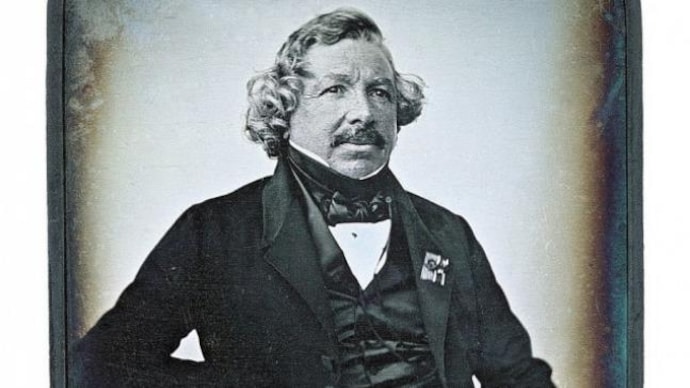About Louis Daguerre, the man who gave us the first practical process of photography known as daguerreotype
Remembering French artist and father of photography, Louis Daguerre: know facts about him

Louis Daguerre (1787-1851) was born in Cormeilles-en-Parisis, France. He apprenticed as a French artist, painter, photographer, and a developer of the diorama theatre.
Exceedingly adept at his skill of theatrical illusion, he became a celebrated designer for the theatre, and later came to invent the diorama, which opened in Paris in July 1822.
He is most famous for the development of daguerreotype which is one of the earliest successful methods of photography. Daguerre grew up in a middle- class family.

All about an inventive painting of Louis Daguerre

'The Ruins of Holyrood Chapel' is an oil on canvas painting of the Holrood Abbey completed around 1824 by the French artist Louis Daguerre.
The painting measures 211 x 256.3 cm and is exhibited at the Walker Art Gallery in Liverpool, England.
How the daguerreotype camera was developed
Joseph Nicephore Niepce was a French inventor, now usually credited as the inventor of photography and a pioneer in that field.
Niepce developed heliography, a technique he used to create the world's oldest surviving product of a photographic process
In the mid-1820s, prior to his association with Daguerre, Niepce used a coating of bitumen of Judea to make the first permanent camera photographs. The bitumen hardened where it was exposed to light and the under-hardened portion was then removed with a solvent.
A camera exposure lasting for hours or days was required in this process. Niepce and Daguerre later refined this process, but unacceptably long exposures were still needed.
How Talbot improved on Daguerre's work
William Henry Fox Talbot is best known for his development of the calotype, an early photographic process that was an improvement over the daguerreotype of the French inventor.
Talbot's calotypes involved the use of a photographic negative, from which multiple prints could be made.

Talbot had succeeded in producing a "sensitive paper" impregnated with silver chloride and capturing small camera images on it in the summer of 1835, though he did not publicly reveal this until January 1839.
He was unaware that Daguerre's late partner Niepce had obtained similar small camera images on silver-chloride-coated paper nearly twenty years earlier.
Talbot chemically stabilized his images to withstand subsequent inspection in daylight by treating them with a strong solution of common salt.
Louis Daguerre died on July 10, 1851, in Bry-sur-Marne from heart failure.
Interested in General Knowledge and Current Affairs? Click here to stay informed and know what is happening around the world with our G.K. and Current Affairs section.
To get more updates on Current Affairs, send in your query by mail to education.intoday@gmail.com
